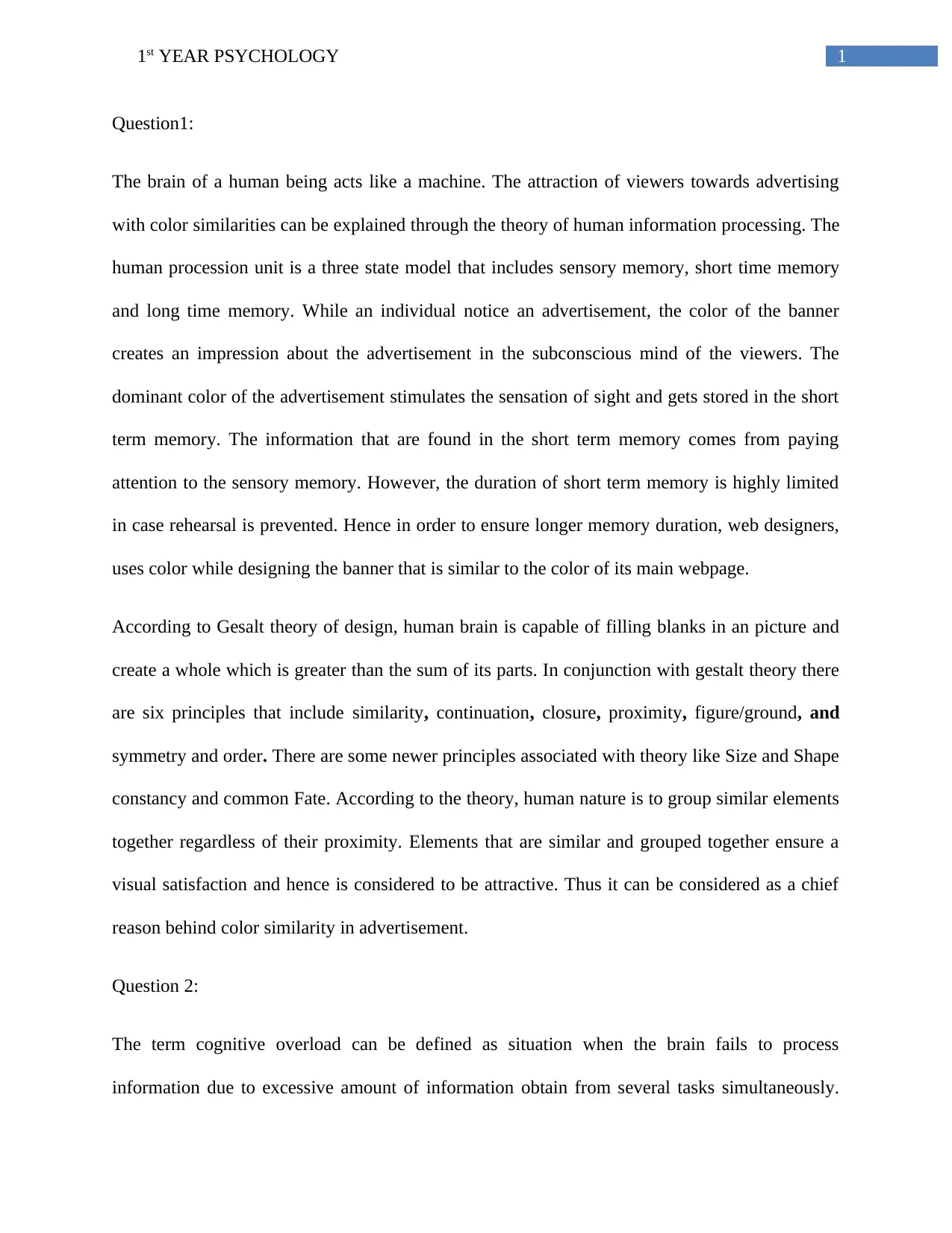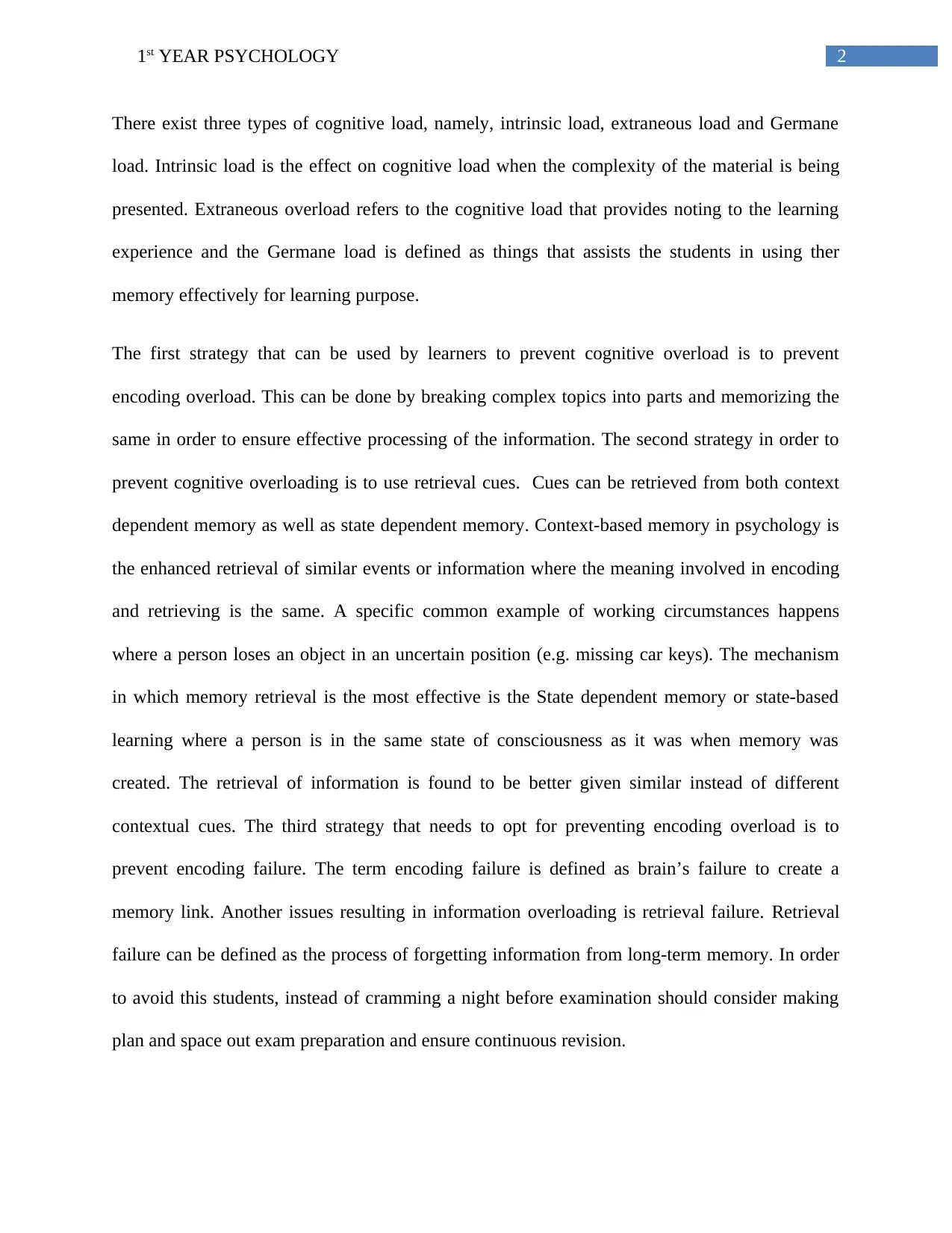First Year Psychology Assignment: Memory, Learning, and Cognition
VerifiedAdded on 2022/09/18
|4
|683
|24
Homework Assignment
AI Summary
This psychology assignment explores key concepts related to memory, learning, and cognitive processes. The first question analyzes how color similarity in advertising leverages human information processing, focusing on the three-stage model of memory (sensory, short-term, and long-term) and the Gestalt theory of design principles like similarity. The second question addresses cognitive overload, defining its types (intrinsic, extraneous, and germane) and strategies to mitigate it, such as preventing encoding overload, utilizing retrieval cues (context-dependent and state-dependent memory), and preventing encoding and retrieval failures. The assignment demonstrates an understanding of how cognitive processes influence behavior and how to improve learning and memory retention.
1 out of 4






![[object Object]](/_next/static/media/star-bottom.7253800d.svg)